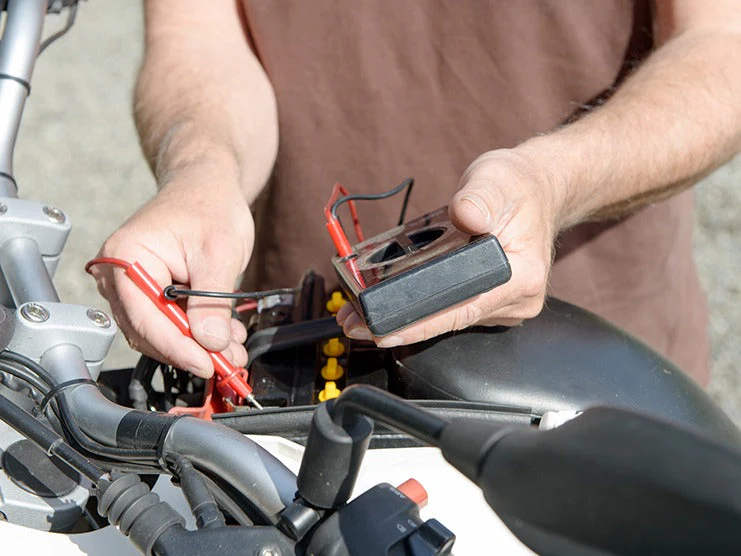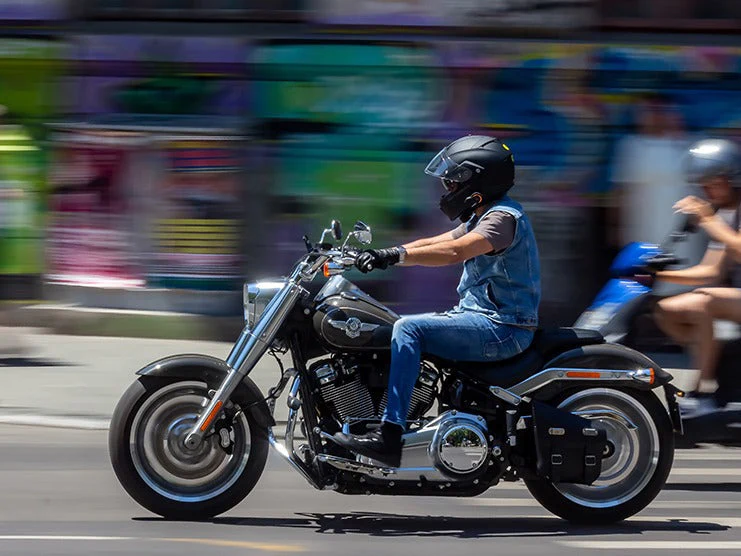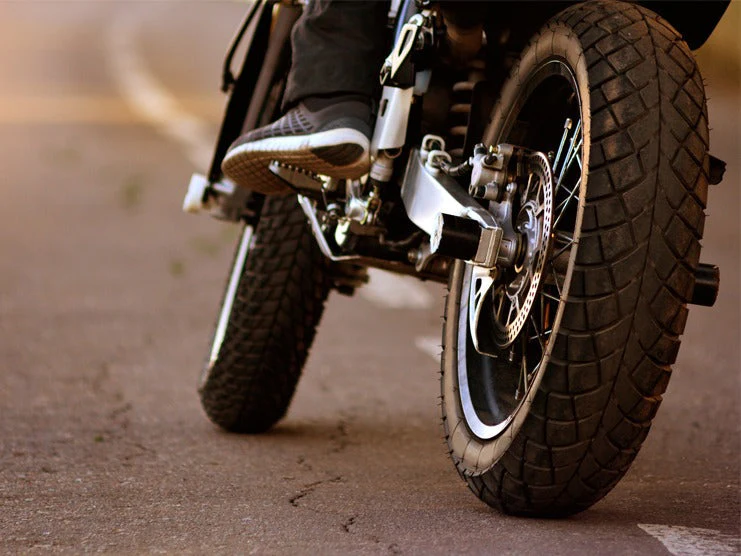A motorcycle battery failing to hold a charge is the most annoying thing for a rider. The battery of the motorbike helps in starting and gives energy to the other components of the bike. When the battery is charged, the current is produced and used by the motorbike to run.
This article discusses possible motorcycle battery charging problems and how to fix them.
Table of Content

1. Dead Battery
A dead battery isn’t capable of retaining a charge and is no longer able to function.
1.1 Signs of a Dead Motorcycle Battery
- If the turn signals keep blinking loudly after installing the battery
- If the horn indicator is soft after installing the battery
- Check the voltage in the battery after charging by using a voltmeter
- Check for any bulges on the battery
1.2 Dead Battery: Reasons
- Corroded Battery Terminal: Corroded terminals of motorcycle batteries can disrupt the current flow and cause leakage.
- Battery Sulfation: It can occur when the plates of the battery are subjected to air or kept in a discharged condition for an extended period. This can cause the lead present in the battery to crystalize and result in permanent damage.
- Vibration and Heat: Vibration and excess heat always have an adverse impact on the components of the battery. It severely shortens a battery’s lifespan.
- Bad Ground Connections: Poor ground connection between the battery and frame will result in overcharging of the battery. The battery may fail to release the excess current which can result in it eventually malfunctioning.
1.3 Solution

For maintaining the excellent condition of the motorcycle battery, you may need to conduct preventative maintenance.
Here are some important preventative maintenance measures to better protect a motorcycle battery:
- Regularly clean the battery's terminals and exterior layer: Wipe dirt off the battery terminals often to keep the upper layer tidy.
- Check the electrolyte levels: Batteries that don’t require maintenance (maintenance-free) are more common nowadays, eliminating the need to check electrolyte quantity. Nevertheless, other types of motorbike batteries must be subjected to routine maintenance checks.
- Fasten the caps of the battery: To ensure that there are no leaks, make sure the battery caps are secure. To protect the motorcycle batteries from leakage, tighten the caps if they are loose.
- Protect the battery from extreme temperatures: Protect the battery from high temperatures by shielding it with a cover since extreme temperatures can damage the engine or shorten its lifespan.
- Avoid battery power problems: Battery power problems can be prevented by making sure the battery’s voltage is not too high. A battery with a stable power output will ensure the motorcycle power system will function properly.
- Fully charge the battery: Making sure the battery is fully charged will help increase its lifespan. A fully charged battery can create a stable current when riding, which will ensure the battery works efficiently.
2. Incorrect Battery Specifications
An incorrect battery size will interfere with charging, resulting in the battery not returning to full charge.
Not all motorcycle batteries are universal fits since they come in different sizes and are constructed from different materials. For instance, cruisers need larger batteries than naked or sports bikes.
2.1 Solution
To find the correct battery specifications for your specific model, check the owner’s manual.
3. Problematic Alternator
An alternator converts mechanical energy to electrical energy to form alternating current. It is an essential part of a battery charging system.
The energy generated by the alternator and transformed to direct current with the help of a regulator is used to recharge the battery.
A malfunctioning or damaged alternator won't properly convert mechanical energy into electrical energy, resulting in no alternating current being produced and the battery not recharging.
3.1 Signs of a Malfunctioning Alternator
You can determine whether an alternator is in bad condition by jumpstarting the motorcycle battery. If the bike is not starting because of a drained battery but still manages to jump start, it may mean the alternator of the bike is the issue instead of the battery. But if the motorbike doesn't start or jumpstart because of a dead battery, you will need to install a new battery.
However, replacing the motorcycle battery would not result in it charging if the alternator is still damaged.
You can also check by removing the motorcycle battery and giving it time to recharge before measuring its charge with a voltmeter. If the battery still has enough power left after recharging, it is still in working condition. However, if the voltmeter indicates that the battery has no power, it is faulty and must be replaced.
3.2 Solution
To fix a problematic alternator, you first need to check its condition. Take a damaged alternator to a motorcycle repair shop if it is still relatively intact. However, if the damage is too severe, it is best to replace the alternator with a new one.
4. Damaged Rectifier Regulator
A rectifier regulator transforms the alternating current (produced by the motorbike alternator) into a direct current. Then, this current travels to the motorcycle battery where it is stored as a charge(current). Moreover, the regulator also controls the battery’s voltage and keeps it within an acceptable range.
However, if the regulator is damaged, the current cannot change and the battery will not charge. Therefore, a damaged regulator can cause the motorcycle’s battery to die.
4.1 Signs of a Damaged Rectifier Regulator
- Hard to start the motorcycle
- The headlight is too dim
If you see any of the aforementioned signs, your rectifier regulator is probably damaged. Several factors, such as riding at high speeds or the rectifier regulator overheating may result in a damaged rectifier regulator.
4.2 Solution
When a rectifier regulator malfunctions, it is best to replace it with a new one because it's one of the electrical system's crucially important components.
5. Broken or Loose Wires in Charging Circuit
Many motorcycles have circuit breakers to protect the electrical wiring, which connects to the lights, accessories, ignition, and instruments. Each of these breakers is self-resetting, automatically restoring and maintaining a constant power supply to the circuit even after an electrical disruption.
If electrical issues are not identified and fixed, the breaker will repeatedly turn on and off, causing the motorbike to behave erratically and eventually drain the battery.
5.1 Solution
It is advisable to have any loose or damaged electrical wiring fixed at a dealership, a service shop, or a repair center instead of trying to fix the circuit by yourself. Take your motorcycle to a service shop and get any damaged electrical wiring repaired.
6. A Blown Fuse
The fuse protects the electrical circuit. Check for blown fuses if any electrical systems stop working after charging or replacing the battery.
6.1 How to Inspect a Blown Fuse
To inspect a blown fuse, remove it from the motorcycle. Turn off the ignition and check the condition of the fuse. If you find a blown fuse, replace it with one with the same rating; a high-rated fuse may increase the likelihood of the motorcycle’s electrical system being damaged.
6.2 Solution
The only solution is the replacement of the blown fuse with the new one of the same rating. The steps given below describe how to replace a blown fuse:
- Remove the motorbike seat by unscrewing the screws and pulling the seat upward and backward until it disconnects from the motorcycle.
- Remove the fuel box cover, then take a fuse puller from your tool kit to pull the fuses out.
- Add new fuses with the same rating as the old ones and reinstall the fuse box cover.
- Put the seat back in place and fasten the bolts. Pull the seat up carefully to make sure it locks in place securely.
If your motorcycle still suffers from faulty fuses, your motorcycle may have issues with its electrical system. Have your bike checked by a repair service or dealership for any kind of electric issues.
7. Faulty Charging System
A motorcycle battery is charged by a generator powered by the engine. This creates a current that flows through the battery as long as the engine is running. If the battery is not charging, check for any faults in the battery’s charging system.
7.1 Solution
To assess the condition of the charging system, make two battery voltage measurements to determine if the battery is at the correct power output.
8. Bad Connections
Faulty connections can result in a dead motorcycle battery, malfunctioning electrical components, and unreliable charging systems. Checking all the connections on your motorcycle is easy if you know where they are. Your service manual provides visual aids to help you find all the connections on your motorcycle. Poor ground connections can lead to problematic charging systems.
8.1 Solution
To fix faulty connections, you only need to follow the instructions in the service manual.
9. Last Words
All motorbikes require a working battery to function. The most common problem that occurs in a motorcycle battery is being unable to charge. This happens due to several reasons, such as the battery being dead, a problematic alternator and regulator, incorrect battery specifications, loose or broken wires in the circuit, a faulty charging system, and bad connections. You can fix these issues by following the guidelines given in the manual or taking your bike to a dealership or service shop for help. There are a variety of aftermarket parts available at Viking Bags, including sissy bars, crash bars, fairings, seats, luggage racks, and backrests.













Leave a comment
All comments are moderated before being published.
This site is protected by hCaptcha and the hCaptcha Privacy Policy and Terms of Service apply.